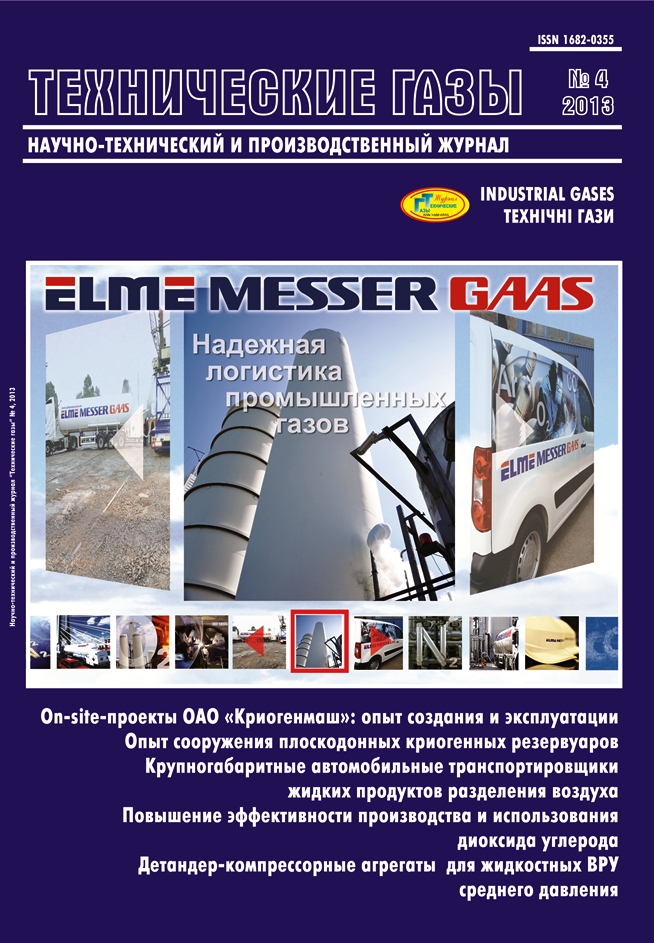DEVELOPMENT OF THE FIVE STAGE COMPRESSOR INSTALLATION 2VМ10-24/81 OF THE UNITIZED DESIGN
DOI:
https://doi.org/10.18198/j.ind.gases.2013.0685Keywords:
Air-separating installation, Reciprocating compressor, Compressor installation, Methanol, Resonance supercharging, Valve, PackingAbstract
The compressor installation 2VМ10-24/81 was developed for the use in cryogenic air-separating installations. The important advantage of it is the unitized design. In addition, the installation can be applied in making mobile complexes for methanol production which will be used as a hydrate inhibitor directly in the natural gas fields. At the same time the expenses for methanol delivery from manufacturers are excluded. It is especially important for remote natural gas fields. For some gas fields of Western Siberia the cost of methanol is 4-6 times higher than that of manufacturer. It should also be taken into account that methanol is a poisonous and an explosive substance which requires expensive transportation. The reciprocating compressor installation 2VМ10-24/81 for use in a methanolic hydrate inhibitor production is considered.
References
Smirnov A.V., Grin N.P., Nataluha Yu.B. (2010). Development piston compressor block design 4VM10-55/71M1 for air separation plants medium pressure// Zhurnal Tehnicheskie Gazy [Journal of Industrial Gases]. — № 6. — P. 31-35. (Rus.)
Rutkovskiy Yu.A. (2011). Resonant wave processes in suction systems of piston compressors// Zhurnal Tehnicheskie Gazy [Journal of Industrial Gases]. — № 2. — P. 23-32. (Rus.)
Lavrenchenko G.K., Shvets S.G. (2006). Basics of the theory of resonance charging reciprocating compressors// Kompressornoe i energeticheskoe mashinostroenie [Compressor and Power Engineering]. — № 1(3). — P. 31-38. (Rus.)
Downloads
Issue
Section
License
LICENSE AGREEMENT
After receiving an article for publication as required revision scientometric databases each author directs the license agreement on the assignment and transfer of the management of copyright. Signatures of the author (s) it is desirable to seal the personnel department of the institution where the author works (authors), or the seal of the Faculty.
Revision refers to the authors one layout for proofreading. Permissible only those fixes that result in compliance with the layout of the original text of the article. Significant changes are not permitted. Layout should be sent to the editorial office within days of receipt.

